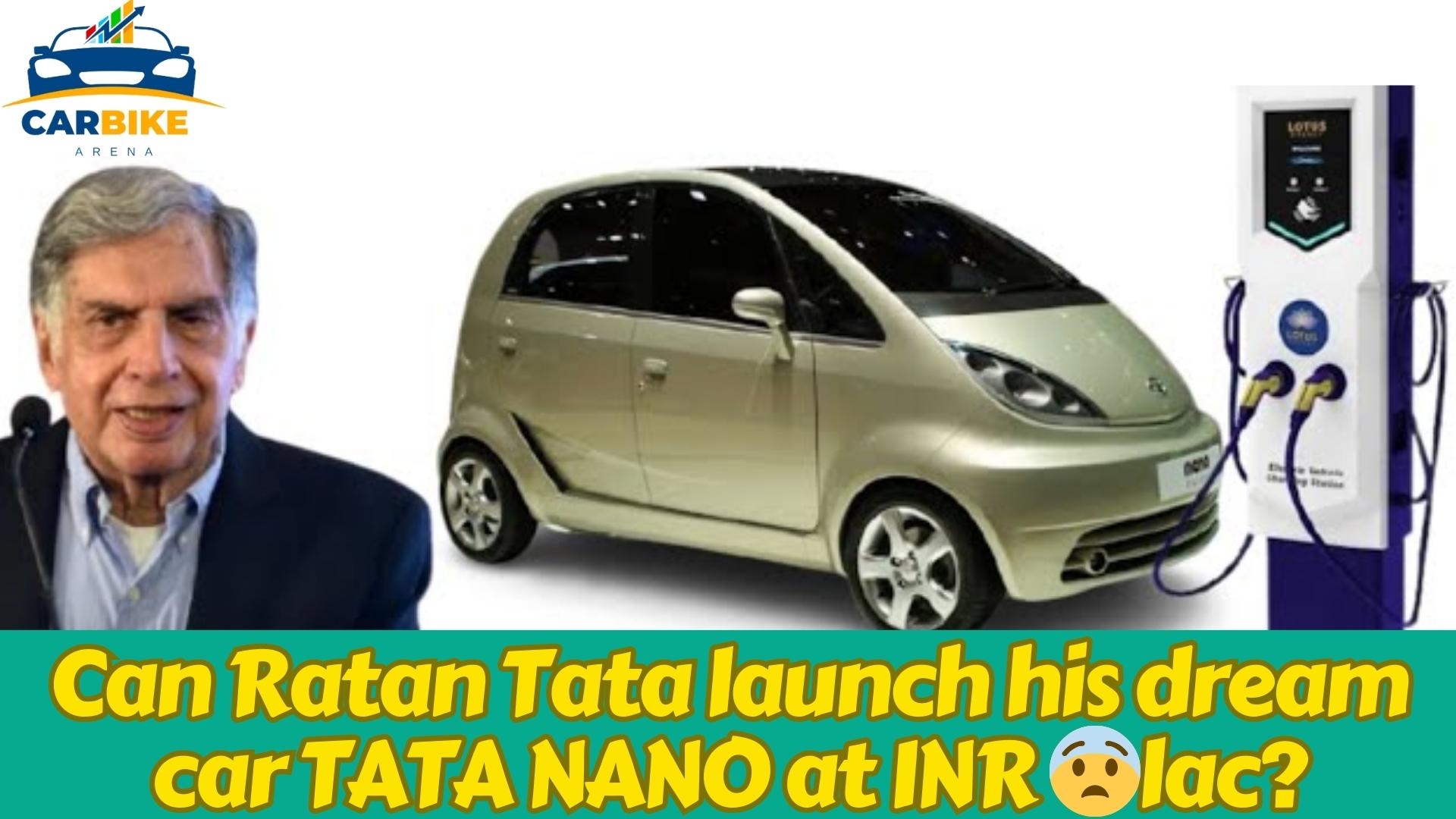Ratan Tata’s vision to crеatе a vеry affordablе car in India lеd to thе dеvеlopmеnt of thе Tata Nano. Thе idеa bеhind thе Nano was to providе an affordable and safer alternative to thе numеrous two-wheeled vehicles that arе commonly usеd by many lowеr-middlе-class and еconomically disadvantagеd families in India.
Ratan Tata aimed to create safer transportation for families on two-wheelers, often with children. His goal is to prevent accidents and save lives by offering a safer transportation alternative.
Tata Nano was created to offer affordable, compact, and convenient transportation for families who couldn’t afford a regular car, ideally suited for navigating India’s crowded roads. Ratan Tata understood that many Indians couldn’t afford traditional cars due to their high costs. In particular, he was interested in making cars affordable for rural and semi-urban populations.
What other cars were on the market at the time?
The surge in electric vehicle adoption within the Indian automotive sector is evident through the remarkable increase in electric car sales during the fiscal year 2022-2023. Responding to the growing demand for economical electric cars in India, various manufacturers have introduced a range of electric vehicles at affordable prices.
Here are a few affordable electric cars in India.

Tata Nano EV

Tata Motors unveils the awaited Tata Nano EV, India’s most affordable electric. A blend of practicality and comfort for a versatile choice in the market.
| Key Specifications | Metrics |
| Price | ? |
| Battery | 17 KWh |
| Range | 170 Km |
| Power | 24 HP |
| Motor capacity | 28 Kw |
| Torque | 85 Nm |
Strom Motors R3
| Key Specifications | Metrics |
| Price | Rs 4.5 lakh |
| Battery | 6kWh |
| Range | 200 Km |
| Power | 20.4 PS |
| Motor capacity | 15 Kw |
| Torque | 90 Nm |

Strom Motors R3 is an Indian-made electric hatchback for urban travel. It’s a compact 2-seater with a charming boxy design, offered in four colours.
PMV EaS E

PMV EaS E: An eco-conscious, affordable micro-EV by Indian startup PMV Electric, perfect for daily urban commutes.
| Key Specifications | Metrics |
| Price | Rs 4.79 lakh |
| Battery | 48 V |
| Range | 140 Km |
| Power | 13.5 PS |
| Motor capacity | 3.3 Kw |
| Torque | 50 Nm |
Renault K ZE
| Key Specifications | Metrics |
| Price | Rs 6 lakh |
| Battery | 26.8 KWh |
| Range | 350 km |
| Power | 45 PS |
| Motor capacity | 33.1 Kw |
| Torque | 125 Nm |

Renault to launch automatic electric hatchback, K-ZE EV, in India by 2023. Meeting the demand for affordable EVs, priced under Rs 6 lakhs.
Mahindra Reva R1

Mahindra Reva R1: India’s first micro-EV since 2002, with advanced features and safety. Now in the second-hand market, a practical choice for eco-conscious buyers.
| Key Specifications | Metrics |
| Price | Rs 3.76 lakh |
| Battery | 48 V |
| Range | 80 km |
| Power | 17.4 PS |
| Motor capacity | 4.8 KW |
| Torque | 52 Nm |
How did the Launch Go :
Tata Motors is set to bolster its electric vehicle portfolio by acquiring Ford’s manufacturing facility in Tamil Nadu. This strategic move strengthens Tata Motors’ presence in the Indian EV market and accelerates the development of its proprietary Ziptron EV Tech. It positions Tata Motors to offer a diverse range of electric vehicles, including the Nano electric and upcoming models.
Tata Nano EV expected to launch in December 2023 release, offers affordability. It boasts advanced features like an enhanced battery capacity and an efficient electric motor, setting it apart from other electric vehicles. The electric motor delivers more power with lower energy consumption, complemented by regenerative brakes, suspension, and other cost-effective features.
What happened in the sale :
Ratan Tata’s vision to crеatе a vеry affordablе car in India lеd to thе dеvеlopmеnt of thе Tata Nano. Thе idеa bеhind thе Nano was to providе an affordable and safer alternative to thе numеrous two-wheeled vehicles that arе commonly usеd by many lowеr-middlе-class and еconomically disadvantagеd families in India.
Ratan Tata aimed to create safer transportation for families on two-wheelers, often with children. His goal is to prevent accidents and save lives by offering a safer transportation alternative.
Tata Nano was created to offer affordable, compact, and convenient transportation for families who couldn’t afford a regular car, ideally suited for navigating India’s crowded roads. Ratan Tata understood that many Indians couldn’t afford traditional cars due to their high costs. In particular, he was interested in making cars affordable for rural and semi-urban populations.
What worked and What Failed?
Positive aspects of the Tata Nano EV
1. Tata Nano EV (Electra) offers an economical electric car solution.
2. Impressive value for money with a 150km range on a single charge.
3. Spacious, comfortable cabin with ample legroom.
4. Adequate top speed of 80km/h for city driving.
5. Small, lightweight, and affordable battery pack for easy driving.
6. Ideal for budget-conscious consumers seeking an economical electric car.
Reasons Behind Tata Nano’s Marketing Failure.
1. Misjudging market needs and rushing a “cheap” car launch that customers didn’t want.
2. Tata Nano, branded “Lakhtakiya,” aimed to be the world’s cheapest car for all. This marketing strategy backfired, as people associated “cheap” with quality compromises, hindering its success.
3. Tata Nano’s marketing lacked emotional appeal, relying heavily on features. While showcasing features was necessary, it failed to establish an emotional connection, impacting market success.
4. Nano faced severe issues with negative PR due to safety concerns, fires, and pricing discrepancies. It lacked stability on highways, had a weak engine, and had no A/C in the base model. These problems, along with a poor safety rating, led to its downfall in the market.
5. The highly anticipated launch in 2008 was overshadowed by the controversy surrounding the shift of the production plant from Singur, West Bengal, to Sanand, Gujarat. This relocation, prompted by land acquisition disputes, led to a loss of public enthusiasm. The hype primarily centred on the car’s low price rather than its overall value proposition.
Reviving the Future: Tata Nano EV 2023 – A Glimpse into 2024!
FAQ for Tata Nano EV
Ratan Tata’s iconic creation, the Tata Nano, is making a remarkable return. Tata Motors is set to unveil an affordable electric version with a refreshed design and exciting features, poised to redefine the market.
The company’s goal was to manufacture 250,000 cars per year, but initial sales were 30,000 in 2009-10, 70,432 in 2010-11, and 74,527 in 2011-12, followed by a continual decline until its closure in 2018. They never reached their target, indicating the failure of the Tata Nano.
Tata Nano was marketed as the cheapest car, with people thinking that didn’t want to associated with with cheap car. Also people thought that cost-effectiveness would come with quality compromises.Thus, bad marketing caused Tata Nano’s failure.

